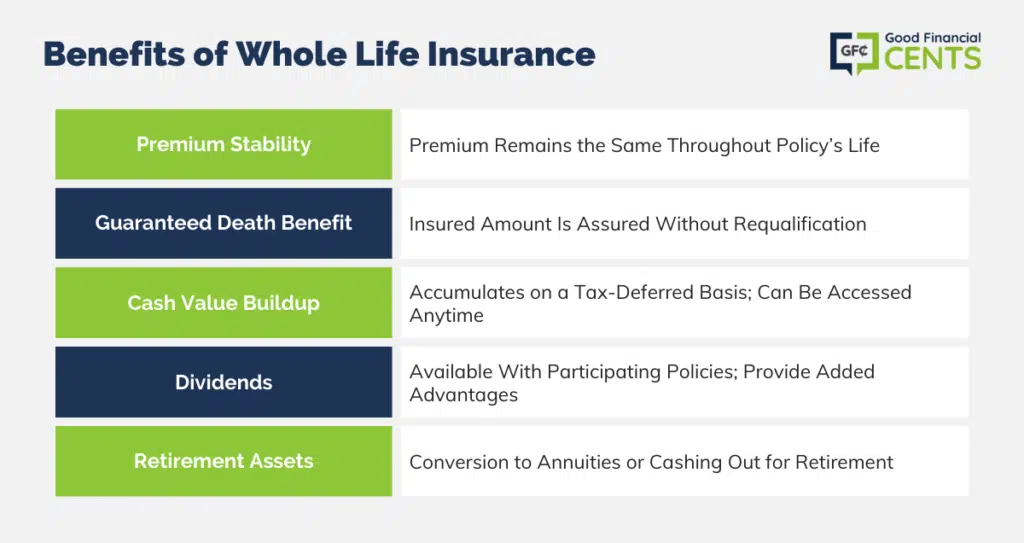Broken Leg Car Accident
Have you ever wondered what it would be like to break your leg in a car accident? It’s not a pleasant experience, to say the least. The pain is excruciating, and the recovery process is long and arduous. If you’re lucky, you’ll make a full recovery. But for some, a broken leg can lead to permanent disability.
I know this firsthand. I was in a car accident a few years ago, and I broke my leg in three places. The pain was so bad that I couldn’t even walk. I had to be taken to the hospital by ambulance, and I spent the next few days in traction. After that, I had to wear a cast for six weeks. It was a long and difficult recovery, but I’m grateful that I was able to walk again.
If you’ve ever broken your leg, you know how painful it can be. But did you know that a broken leg can also be dangerous? A broken leg can lead to blood clots, infections, and even death. That’s why it’s so important to seek medical attention immediately if you think you’ve broken your leg.
Now that you know more about broken legs, what can you do to prevent them? The best way to prevent a broken leg is to avoid getting into a car accident. But if you’re involved in an accident, there are some things you can do to reduce your risk of breaking your leg. These include wearing a seatbelt, driving defensively, and avoiding driving in bad weather.
Broken Leg Car Accident: Causes, Treatment, and Recovery
Imagine yourself driving along, minding your own business, when suddenly, your world is turned upside down by a car accident. In the aftermath, you find yourself with a broken leg – a painful and debilitating injury that can have a significant impact on your life. While broken legs can happen in various ways, car accidents are a common cause, especially in high-impact collisions like head-on crashes or rollovers.
Causes of Broken Legs in Car Accidents
The sheer force of a car accident can exert tremendous pressure on your body, leading to broken bones. Several factors contribute to the likelihood of sustaining a broken leg in a car crash:
- Type of collision: Head-on collisions and rollovers are particularly dangerous for leg injuries due to the intense impact and sudden deceleration.
- Speed of impact: The higher the speed at which the vehicles collide, the greater the risk of severe injuries, including broken legs.
- Position of the body: If your legs are not properly positioned during the crash, such as being extended or twisted, they are more vulnerable to breakage.
- Vehicle design: Cars with poor safety features, such as inadequate legroom or weak side panels, offer less protection in a collision.
- Occupant characteristics: Age, weight, and overall health can influence the severity of injuries, including broken legs.
It’s important to note that not all car accidents result in broken legs, but understanding the causes can help you take precautions to minimize the risk.
Broken Leg in a Car Accident: What You Need to Know
If you’ve been in a car accident, you may be wondering if you have a broken leg. A broken leg is a serious injury that can cause a lot of pain and disability. It’s important to seek medical attention right away if you think you may have a broken leg.
Symptoms of a Broken Leg
The most common symptoms of a broken leg are pain, swelling, and deformity. You may also have bruising, numbness, and tingling. If you can’t put weight on your leg or if it looks deformed, you should seek medical attention immediately.
What Causes a Broken Leg?
A broken leg can be caused by a variety of things, including car accidents, falls, and sports injuries. The most common type of broken leg is a closed fracture, which means that the skin is not broken. Open fractures are more serious and require immediate medical attention.
Treatment for a Broken Leg
The treatment for a broken leg depends on the severity of the break. Closed fractures can often be treated with a cast or splint. Open fractures require surgery to clean the wound and repair the bone. In some cases, surgery may also be necessary to repair ligaments or tendons that have been damaged.
Recovery from a Broken Leg
Recovery from a broken leg can take several weeks or months. During this time, it’s important to keep the leg elevated and to avoid putting weight on it. You should also follow your doctor’s instructions for care and rehabilitation.
Broken Leg Car Accident: A Guide to Treatment and Recovery
Being involved in a car accident is a traumatic experience, and the injuries sustained can range from minor to severe. One of the most common injuries resulting from a car accident is a broken leg. Breaking a leg can be extremely painful and could result in long-term complications if not treated properly. This article will provide you with comprehensive information on the treatment options available for a broken leg, as well as tips for a successful recovery.
Treatment for a Broken Leg
The treatment for a broken leg typically involves three main components: immobilization, pain management, and physical therapy. Immobilization involves keeping the broken bone in place to allow it to heal properly. This is typically achieved using a cast or splint. Pain management involves taking medication to relieve pain and inflammation. Physical therapy involves exercises to help the leg regain strength and mobility once the bone has healed.
Immobilization
Immobilization is the first step in treating a broken leg. It involves keeping the broken bone in place to allow it to heal properly. This is typically achieved using a cast or splint. A cast is a hard covering that completely encases the broken bone, while a splint is a less rigid covering that allows some movement. The type of immobilization used will depend on the severity of the break.
Pain Management
Pain management is an important part of treating a broken leg. Pain can make it difficult to sleep, move, or perform everyday activities. There are a number of different medications that can be used to relieve pain, including over-the-counter pain relievers, prescription pain medication, and nerve blocks. The type of medication used will depend on the severity of the pain.
Physical Therapy
Physical therapy is an essential part of recovering from a broken leg. Physical therapy exercises help to strengthen the muscles around the leg, improve range of motion, and prevent stiffness. Physical therapists can also teach patients how to use crutches or a walker to help them get around while their leg is healing. Physical therapy typically begins once the bone has healed enough to bear weight.
Broken Leg Car Accidents
I was driving home from work one day when I was hit by a car that ran a red light. The impact was so strong that my car was totaled, and I was taken to the hospital with a broken leg. I’m still recovering from my injuries, but I’m grateful to be alive.
Car accidents are a leading cause of broken legs. In fact, according to the National Highway Traffic Safety Administration (NHTSA), over 100,000 people are injured in car accidents each year. Of those injuries, approximately 10% are broken legs.
While there is no surefire way to prevent a car accident, there are some things you can do to reduce your risk of being injured in a crash. One of the most important things you can do is wear your seatbelt. Seatbelts can help to keep you in your seat in the event of a crash, which can help to prevent serious injuries, including broken legs.
Prevention of Broken Legs in Car Accidents
The best way to prevent broken legs in car accidents is to wear your seatbelt and to drive safely. Here are some other things you can do to reduce your risk of being injured in a crash:
– Avoid driving under the influence of alcohol or drugs.
– Drive at a safe speed.
– Be aware of your surroundings and obey the traffic laws.
– Keep your car in good repair.
– Get regular checkups and screenings.
Driving at a Safe Speed
One of the most important things you can do to prevent a car accident is to drive at a safe speed. Speed limits are set for a reason, and they should be obeyed. Driving too fast increases your risk of being involved in a crash, and it also increases the severity of injuries if you are in a crash.
Be Aware of Your Surroundings
It is important to be aware of your surroundings when you are driving. This means paying attention to the road, the other cars around you, and the pedestrians and cyclists. Be prepared to react to unexpected situations, such as a car suddenly pulling out in front of you.
Obey the Traffic Laws
Obeying the traffic laws is an important part of safe driving. This includes stopping at stop signs and red lights, yielding to pedestrians and cyclists, and driving within the speed limit. Obeying the traffic laws helps to keep everyone safe.
Keep Your Car in Good Repair
A well-maintained car is less likely to break down or have an accident. Make sure to get regular oil changes, tire rotations, and brake inspections. Also, be sure to fix any problems with your car as soon as possible.
Get Regular Checkups and Screenings
Regular checkups and screenings can help to keep you healthy and safe. Your doctor can check your vision, hearing, and reflexes. They can also screen for conditions that could affect your driving, such as diabetes or heart disease.
Broken Leg in a Car Accident: What You Need to Know
Have you or someone you know been in a car accident and suffered a broken leg? If so, you’re not alone. Broken legs are one of the most common injuries sustained in car accidents. Understanding the causes, symptoms, and treatment options for broken legs can help you get the care you need and recover as quickly as possible.
Causes of Broken Legs in Car Accidents
When a car is involved in an accident, the impact can cause the bones in the leg to break. This can happen in a number of ways, including:
- Direct impact from another vehicle or object
- Twisting or bending of the leg
- Sudden deceleration or acceleration
Symptoms of Broken Legs
The symptoms of a broken leg can vary depending on the severity of the break. Some common symptoms include:
- Intense pain
- Swelling
- Bruising
- Difficulty walking or putting weight on the leg
- Deformity of the leg
Treatment for Broken Legs
Treatment for a broken leg typically involves immobilizing the leg to allow the bone to heal. This can be done with a cast, a splint, or a brace. In some cases, surgery may be necessary to repair the broken bone.
Recovery from a Broken Leg
The recovery time for a broken leg can vary depending on the severity of the break. Most people will need to use crutches or a walker for several weeks while the bone heals. Physical therapy may also be necessary to help regain strength and range of motion in the leg.
Complications of Broken Legs
While most broken legs heal without complications, there are some potential complications that can occur, including:
- Infection
- Nerve damage
- Blood clots
- Chronic pain
- Stiffness
Preventing Broken Legs in Car Accidents
There are a number of things you can do to help prevent broken legs in car accidents, including:
- Wear your seatbelt every time you get in a car.
- Adjust your seat so that you can reach the pedals comfortably without having to stretch or slouch.
- Keep your feet on the floor of the car at all times.
- Avoid driving while intoxicated or fatigued.
Conclusion
A broken leg is a serious injury, but it can be treated successfully with proper care. If you have been in a car accident and believe you may have broken your leg, it is important to seek medical attention immediately. Early diagnosis and treatment can help prevent complications and speed up the healing process.




Leave a Reply